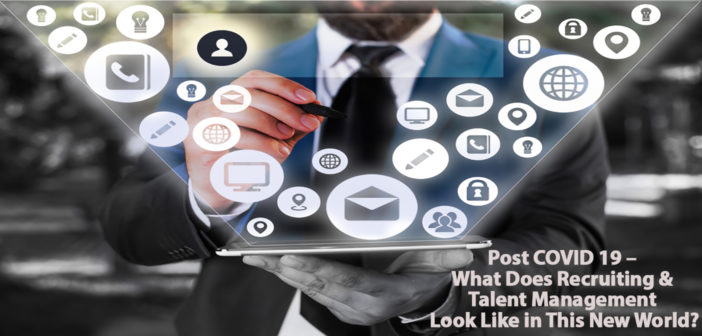First, I hope you are all staying healthy and safe. The last 90 days has taught us all that working remotely is possible. Millions upon millions of us went from commuting to our workplace every day to abruptly scrambling to find a place in our homes to get our work done. Companies quickly provided technology solutions to make the transition easier and coached employees on how to use them. Platforms like Zoom catapulted overnight and continue to be in high demand. For some, the transition was easy because they were already accustomed to working with colleagues around the globe but for others this was a dramatic shift. Some would argue that productivity has increased while others are struggling to battle through the distractions at home. Office buildings around the world are virtually empty and eerily quiet and may remain so for quite some time, maybe even permanently. Regardless of your situation, remote work in some capacity is here to stay.
What impact will remote work have on recruiting and talent management ? I think it will be a game changer. Employers have already started to adjust to remote recruiting, meetings, supervision, etc. and are feeling comfortable that managing talent remotely really can work. As a result, some of those empty office buildings may never be filled again. Where remote work is doable, employers will no longer be restricted to local resources and that will significantly increase the labor pool they have available to them AND the competition for jobs. In addition, COVID-19 has uncovered the fact that we may not have the right skills / competencies that we need in our Sourcing / Supply Chain organizations to forge ahead in this new post COVID world. In fact, it may be necessary to completely rethink your competency model with an emphasis on Strategic skills (e.g. Change Management, Consulting, Communication, Collaboration) and less on functional skills. It may also be necessary to develop a more nimble staffing model that allows you to flex both in numbers of people and skills as the world around us changes. COVID will have a dramatic impact on the workforce of the future and we all need to be planning for that impact.
I read a headline in the New York Times this week which caught my eye, “Trump Suspends Visas Allowing Hundreds of Thousands of Foreigners to Work in the U.S.”. This ban covers both H1B visas for highly skilled workers (e.g. engineering, tech, consulting, etc.) and H2B visas for seasonal workers in landscaping and other nonfarm jobs through the end of the year. The rationale behind this ban is to safeguard jobs for unemployed U.S. citizens where the jobless rate is in the double-digits. By the way, the ban on H1B visas was threatened early in this administration but never materialized until now. The impact today may not be as dramatic as once thought because of the “warming up” to remote work but it does need to be considered nonetheless. This is just one example of the impact COVID is already having on our workforce.
Our new world will require all companies to do some strategic workforce planning across every discipline. We need to determine what the workplace of the future looks like, what skills / competencies we need, which skills should we keep in-house vs. outsource, etc. In addition, all areas of competency- based talent management – recruiting, performance management, training / development, career management and succession planning need to be reimagined. While COVID has presented many risks, there are also tremendous opportunities which a little planning will allow you to capitalize on especially in the area of talent.
Stay safe everyone, let us know what you think and join in the conversation . . . . .

